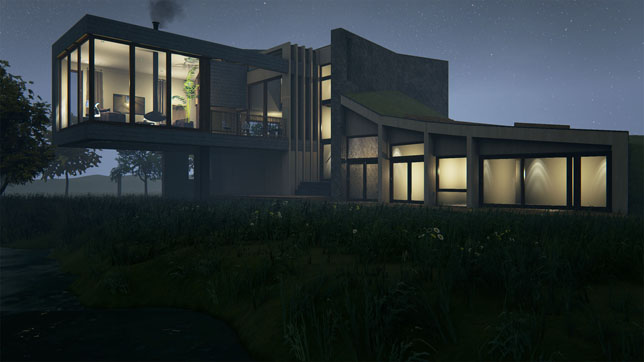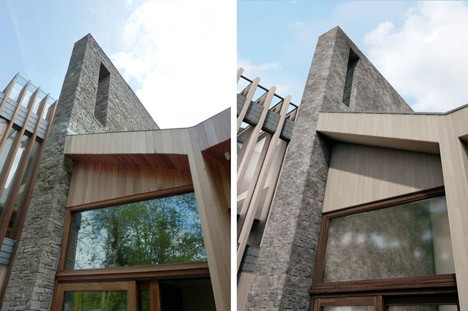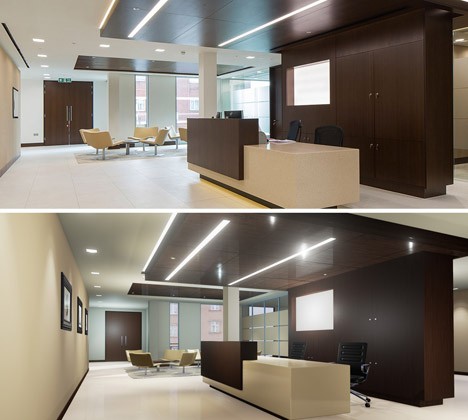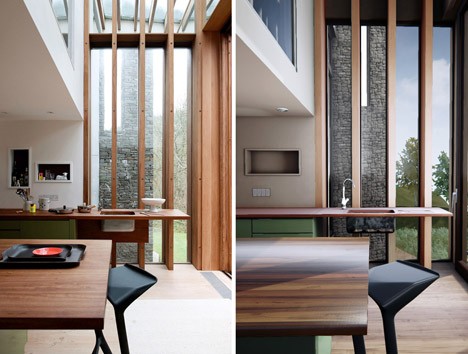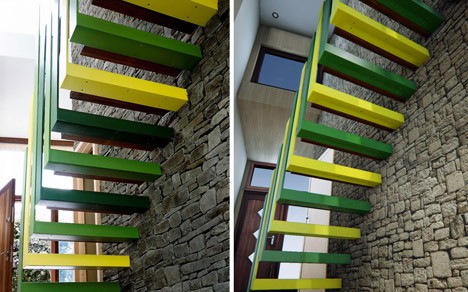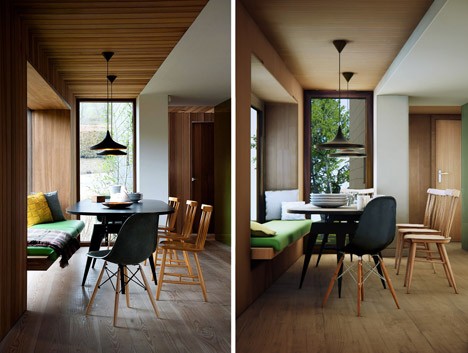No matter how many drawings and models a client is shown, there is still a leap of imagination needed for someone to understand how a building design will really look and feel when it is realized. The gap, however, is rapidly closing between representation and reality, with digital models that can be experienced and interacted with in realtime that will soon be indistinguishable from physical reality.
Olivier Demangel of London 3D imaging company IVR NATION modeled the home shown above using images found online, and as impressive as the walk-through video above may be, it does not compare to the experience of the space via an 3D Oculus Rift headset.
The model’s creator expects full 100% realism to be a reality in just 5 years. In some of the side-by-side images above and below, it is already hard to tell the real from the virtual.
In an interview with Dezeen, Demangel explains the interactivity built into the model, letting you open “doors and turn on the lights” as well as “instantly change materials for the walls, the floor, the position of lights. [Y]ou can experiment with a lot of different options — design, materials, lighting, weather — very quickly.”
For architects, the real power lies partly in being able to show designs to clients, but also in the ability to see how every detail of a design works together (or falls apart) from a first-person perspective, essentially a 1:1 scale model complete with every view available, each time of day easy to simulate.
Will this window really show what the designer intended? Will that patio really get the daylight promised? Individually-rendered scenes and perspectives used to take hours to days to compute, sometimes using multiple machines – now the same can be done in seconds.
Meanwhile, the ‘simulation singularity‘ is approaching – a day when we will no longer be able to use our sense of vision (and perhaps others as well) to distinguish between virtual and real: “The technological singularity is a hypothetical moment in the future when artificial intelligence becomes indistinguishable from human intelligence—and capable of creating smarter iterations of itself. Apply the same general idea to simulations and you get the simulation singularity: when a simulated world is indistinguishable from reality.”
